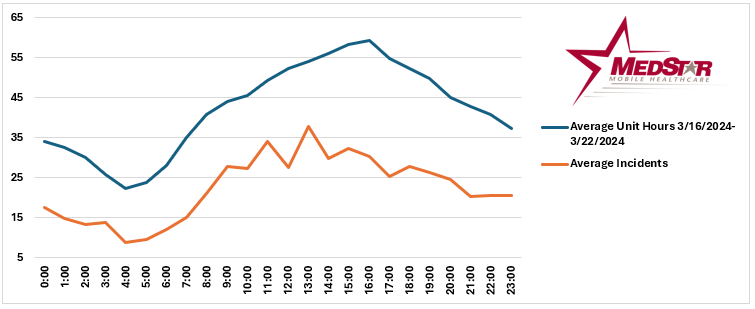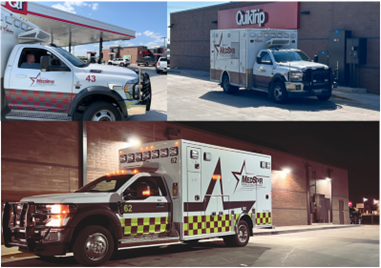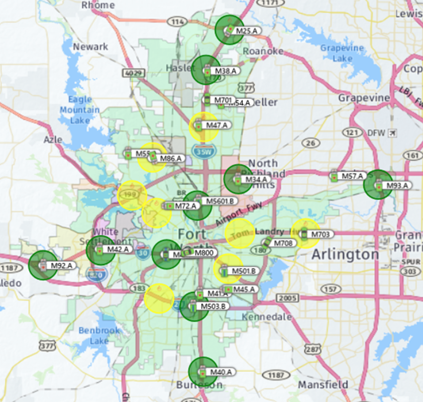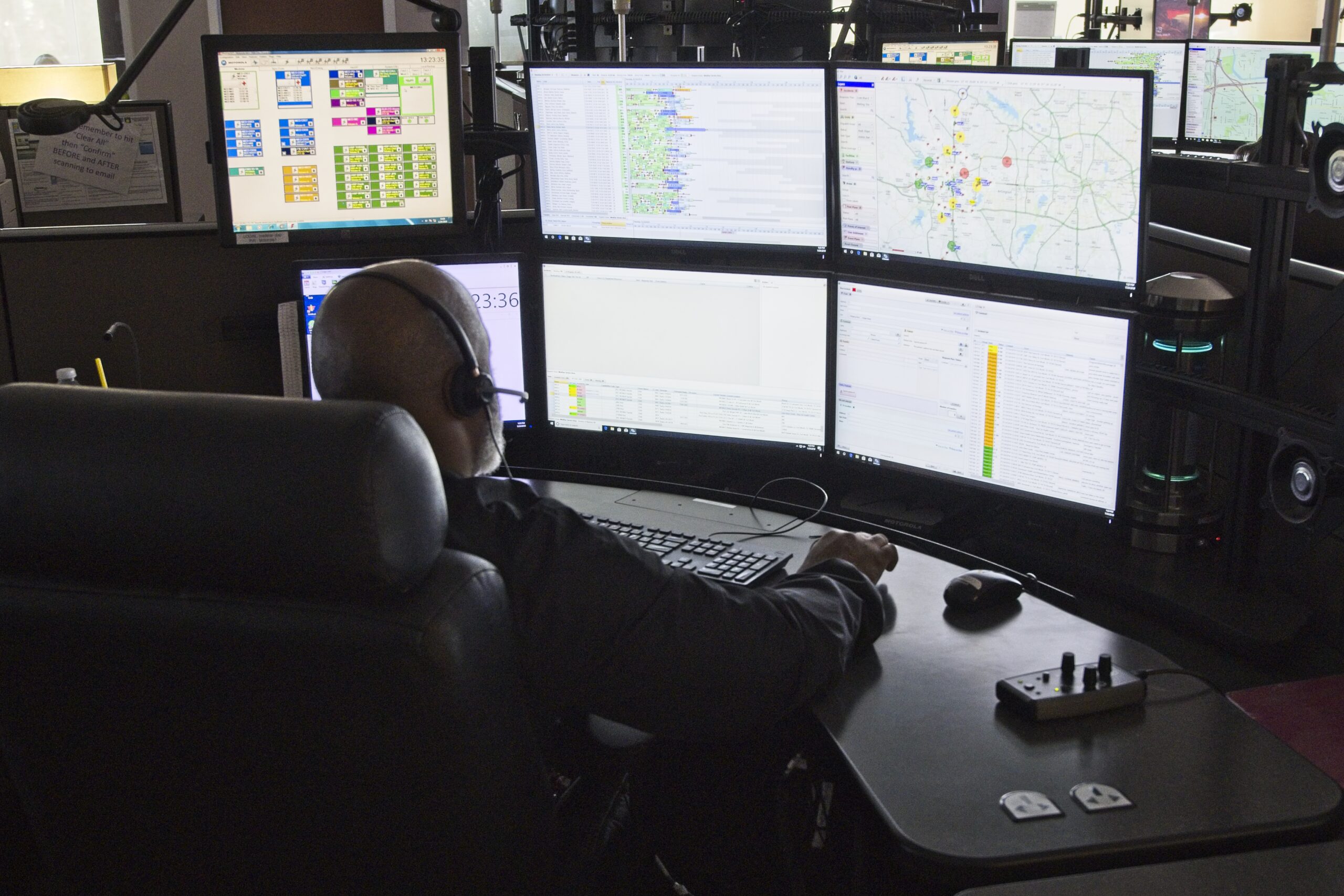MedStar uses very specially trained dispatchers and sophisticated data systems to deploy ambulance resources to respond to 911 calls in the community.
EMS response volume follows a pattern; with more calls occurring during the day, especially late afternoon/early evening, and fewer calls occurring in the wee hours of the morning, so we staff more units for predicted response volume.
Here’s our actual average unit hour staffing (a ‘unit hour’ is one hour of a fully staffed, on-duty ambulance) and response volume during the week of March 16 through March 22, 2024. Note that for the week, on average, we staffed 57 unit hours (i.e.: ambulances) at 4pm and 24 unit hours at 4am. More than twice as many ambulances when response volume is high (and traffic is a mess!).

To meet response demand, MedStar staffed 26,601 ambulance hours on the street in February 2024 (an average of 917 ambulance unit hours per day).
But it’s not just the volume of responses, it’s where they occur.
EMS responses follow people, not buildings, so our deployment plan does not use fixed stations to protect buildings that don’t move, but rather, to pre-position (post) available ambulances based historical patterns of the locations of calls for the time of day, and day of week.
Did you ever notice a MedStar ambulance parked at a QT parking lot?
It’s there because our computer aided dispatch (CAD) system placed them there to be ready to respond to a likely EMS response occurring in that area within the next hour (so, don’t hang out there too long because the predicted call we may be waiting for might be YOU!).

Because we dynamically deploy crews this way, we can be very nimble with pre-positioning ambulances, and very quick to start a response when notified. They are already in the ambulance, and the ambulance running, so the activation time is literally from ‘Park’ to ‘Drive’! The average time between when a unit is notified to respond to a call the time and they start moving toward the scene is 17.9 seconds!
MedStar’s CAD uses over 50 post locations, and we move ambulances to cover those posts an average of 450 times per DAY! Sure, we’d like to chill in a station between calls, but we post like this because it allows us to serve you better. And we’re here for you.
Here’s what our posting plan looks like in our CAD:

This system takes very specialized dispatchers, and sophisticated computer systems analyzing tens of thousands of calls every minute, to accurately deploy these resources for you!

To see facts about MedStar “one of the least understood organizations in the community,”, click here: https://www.medstar911.org/category/news-and-press-releases/
To learn more about MedStar, and the EMS system, feel free to visit the Fort Worth City Manager’s EMS FAQs here: https://www.fortworthtexas.gov/departments/citymanager/med-star
To learn more about the ongoing EMS System assessment, click the City of Fort Worth news release here: https://www.fortworthtexas.gov/news/2024/2/ems-fitch-recommendations
And, see a recent news report from the Fort Worth Report here: https://fortworthreport.org/2024/02/20/fort-worth-is-considering-four-potential-ems-models-heres-what-theyd-do/





